Topics
Category
Era
Cologne: From the Diary of Ray and Esther (film)
The title card used to introduce the film Cologne: From the Diary of Ray and Esther, filmed in Cologne, Minnesota, in 1939 by Raymond and Esther Dowidat. E-34 (AV1989.205), Audio-visual Collection, Minnesota Historical Society, St. Paul.
In 1939, a small-town doctor and his wife created a striking amateur film that captured their Minnesota community near the end of the Great Depression. The film is now included in the Library of Congress’s National Film Registry, which recognizes it as a significant documentary of rural life.
In 1937, a young doctor named Raymond (Ray) Dowidat had completed his medical training and accepted a new post in Cologne, a small German American enclave in rural Carver County about forty miles southwest of Minneapolis. Ray moved to the town with his wife, Esther, and their family, and he served the community as a general practitioner for the next two years before returning to Minneapolis.
In the summer of 1939, during the family’s final months in Cologne, Ray and Esther created an unconventional souvenir: a short, silent film that documented daily life in their town. Ray had gained an interest in home moviemaking, which was possible in the 1930s because companies like Eastman Kodak were producing 16mm-gauge film stock and cameras specifically for amateur users like him. Although such equipment remained out of reach for many working people in rural areas at the time, Ray’s professional career allowed him to fund his hobby.
The Dowidats’ film, called Cologne: From the Diary of Ray and Esther, is under fifteen minutes long, and much of it was edited “in camera”—meaning most shots were filmed sequentially on the same film roll, so little splicing was required later. Despite it being a home movie, Cologne is unusually polished. The Dowidats used a simple but effective framing device to depict town life: scenes unfold through Esther’s diary entries. As Esther reflects on her family’s time in Cologne, close-up shots of her handwritten pages act as intertitles that narrate the film. Her observations introduce footage on a range of topics, from the rural landscape and agriculture to social events and community rituals.
After Esther introduces Cologne, the film shows the town’s neat houses, church spires, lumber yard, and surrounding expanse of farmland. Rather than dwell on the trials of the Great Depression, the Dowidats highlight the town’s active economy: Esther’s diary cues up shots of modern farm work, the blacksmith shop, and the local mill. The Catholic church also makes a cameo as a significant local institution; Cologne’s Lutheran church is absent, which is perhaps odd given that Ray’s father was a prominent Lutheran pastor in Minneapolis. The film’s only hint that Cologne was not thriving is a comment that the railroad line passing through the town had ceased making stops there.
The Dowidats’ neighbors—whom the film describes as “good natured Germans or Hollanders”—appear in greater numbers in the second half of Cologne. Ray and Esther documented the social life of the town’s residents through unpretentious events like the fire department parade and weekly saloon suppers. The film’s memorable final sequence shows the importance of Cologne’s bars, and Esther comments that “In Cologne, everybody drinks beer.” The film then captures a (staged) brawl, and it is unclear if the Dowidats intended wry humor or slight annoyance at the local drinking culture. Esther’s last diary entry in the film, written as the family prepared to leave Cologne, relates that she has “Some regrets, many memories—pleasant and bitter…” The film then cuts from that ambiguous comment to a final image of the town’s landmark water tower.
Most likely, the Dowidats shared their film with only their neighbors, and the family moved on. Although Cologne may strike viewers as a quaint portrait of a typical Midwestern town, the film is a rare and remarkable document of rural life during the final years of the Great Depression. In the 1930s, the federal government sponsored numerous efforts to document the lives of rural people across the United States: the Farm Security Administration photography program is one prominent example that aimed to document Americans’ hardships and spur action. In contrast, the Dowidats were amateur creators and relative insiders in Cologne, and their film sprang from a sincere attachment to a local community that, for most Americans, remained off the beaten path.
After the Dowidats’ daughter discovered Cologne in Esther’s attic, she donated the film to the Minnesota Historical Society, which secured a federal grant to preserve it. In 2001, the Librarian of Congress selected Cologne as one of twenty-five films that year for the National Film Registry, an inventory of significant American films. The Dowidats’ modest film then joined a cohort of Classical Hollywood movies and blockbusters like Jaws.
Bibliography
AV1989.205 donation record and correspondence, 1989–2001. Audio-visual collection, Minnesota Historical Society, St. Paul.
Certificate of marriage of Raymond W. Dowidat and Esther L. Nelson, July 12, 1936. Worth County, Iowa State Board of Health.
E-34 (AV1989.205)
Audio-visual Collection, Minnesota Historical Society, St. Paul
Description: Cologne: From the Diary of Ray and Esther, 1 film reel, 13 min, 16mm.
https://mnpals-mhs.primo.exlibrisgroup.com/discovery/fulldisplay?docid=alma990016518460104294&context=L&vid=01MNPALS_MHS:MHS&lang=en
Eagan, Daniel. “Cologne: From the Diary of Ray and Esther.” Center for Home Movies.
https://www.centerforhomemovies.org/other-histories/essays/cologne-from-the-diary-of-ray-and-esther-daniel-eagan
“Five Physicians Resume Practice.” Minneapolis Morning Tribune, March 31, 1946.
Library of Congress. “Librarian of Congress Names 25 More Films to National Film Registry.”
https://www.loc.gov/item/prn-01-184/national-film-registry-2001/2001-12-18
“Pastor to Mark 40th Anniversary.” Minneapolis Star Journal, January 1, 1944.
Simmon, Scott. “Cologne: From the Diary of Ray and Esther.” National Film Preservation Foundation.
https://www.loc.gov/static/programs/national-film-preservation-board/documents/cologne.pdf
Strickler, Jeff. “Local Films To Be Saved.” Minneapolis Star Tribune, March 7, 1999.
“Raymond Dowidats Wed.” Minneapolis Tribune, November 17, 1936.
Related Resources
Secondary
Stott, William. Documentary Expression and Thirties America. New York: Oxford University Press, 1973.
Tepperman, Charles. Amateur Cinema: The Rise of North American Moviemaking, 1923–1960. Oakland, CA: University of California Press, 2014.
Treasures from American Film Archives. DVD. San Francisco: National Film Preservation Foundation, 2000.
Zimmerman, Patricia R. Reel Families: A Social History of Amateur Film. Bloomington, IN: Indiana University Press, 1995.
Web
Library of Congress: National Film Preservation Board. Film Registry.
https://www.loc.gov/programs/national-film-preservation-board/film-registry
National Film Preservation Foundation.
https://www.filmpreservation.org
Related Video
Cologne: From the Diary of Ray and Esther
Esther Dowidat and her husband, Raymond, filmed Cologne: From the Diary of Ray and Esther in their hometown in Carver County, Minnesota, in 1939. The 16 mm silent movie, which offers views of Cologne and its residents on the eve of World War II, was added to the National Film Registry in 2001. Link to Minnesota Historical Society catalog record: https://mnpals-mhs.primo.exlibrisgroup.com/discovery/fulldisplay?docid=alma990016518460104294&context=L&vid=01MNPALS_MHS:MHS&lang=en
Holding Location
Related Images
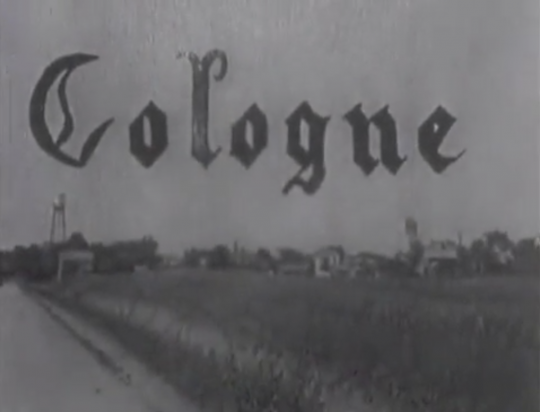
Title card of Cologne
The title card used to introduce the film Cologne: From the Diary of Ray and Esther, filmed in Cologne, Minnesota, in 1939 by Raymond and Esther Dowidat. E-34 (AV1989.205), Audio-visual Collection, Minnesota Historical Society, St. Paul.
Holding Location
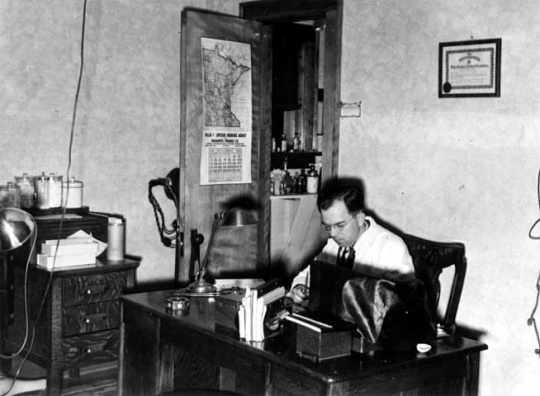
Raymond William Dowidat in his medical office
Dr. Raymond William Dowidat in his office in Cologne, Minnesota, February 26, 1939.
Holding Location
More Information
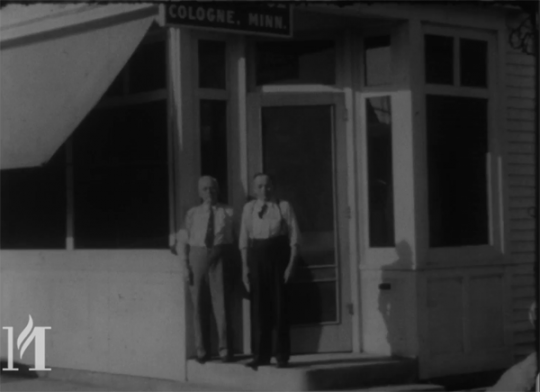
Still from Cologne
Still from the film Cologne: From the Diary of Ray and Esther, filmed in Cologne, Minnesota, in 1939 by Raymond and Esther Dowidat. E-34 (AV1989.205), Audio-visual Collection, Minnesota Historical Society, St. Paul.
Holding Location
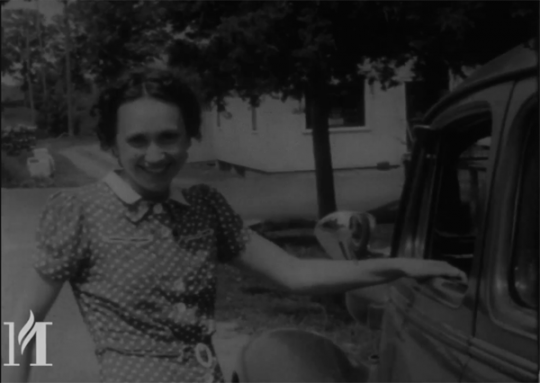
Still from Cologne
Still from the film Cologne: From the Diary of Ray and Esther, filmed in Cologne, Minnesota, in 1939 by Raymond and Esther Dowidat. E-34 (AV1989.205), Audio-visual Collection, Minnesota Historical Society, St. Paul.
Holding Location
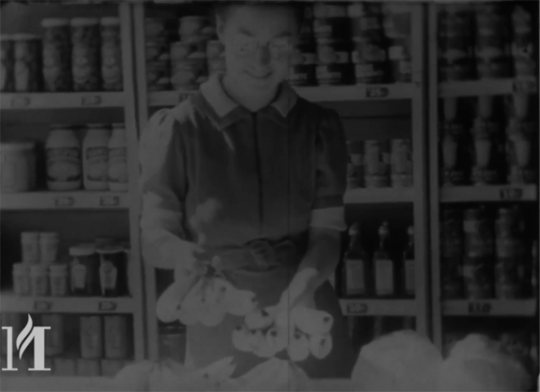
Still from Cologne
Still from the film Cologne: From the Diary of Ray and Esther, filmed in Cologne, Minnesota, in 1939 by Raymond and Esther Dowidat. E-34 (AV1989.205), Audio-visual Collection, Minnesota Historical Society, St. Paul.
Holding Location
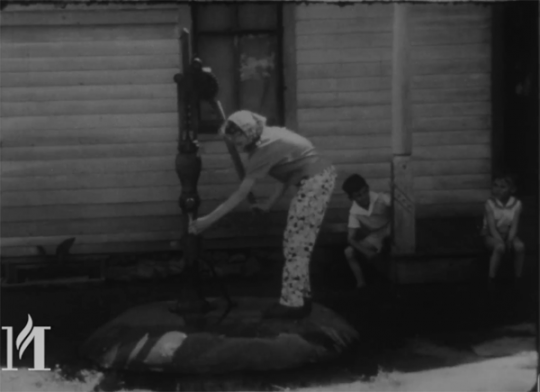
Still from Cologne
Still from the film Cologne: From the Diary of Ray and Esther, filmed in Cologne, Minnesota, in 1939 by Raymond and Esther Dowidat. E-34 (AV1989.205), Audio-visual Collection, Minnesota Historical Society, St. Paul.
Holding Location
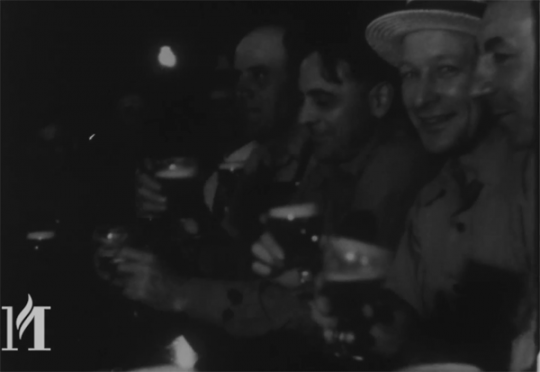
Still from Cologne
Still from the film Cologne: From the Diary of Ray and Esther, filmed in Cologne, Minnesota, in 1939 by Raymond and Esther Dowidat. E-34 (AV1989.205), Audio-visual Collection, Minnesota Historical Society, St. Paul.
Holding Location
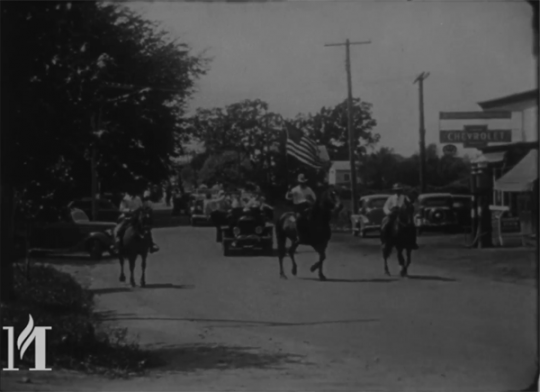
Still from Cologne
Still from the film Cologne: From the Diary of Ray and Esther, filmed in Cologne, Minnesota, in 1939 by Raymond and Esther Dowidat. E-34 (AV1989.205), Audio-visual Collection, Minnesota Historical Society, St. Paul.
Holding Location
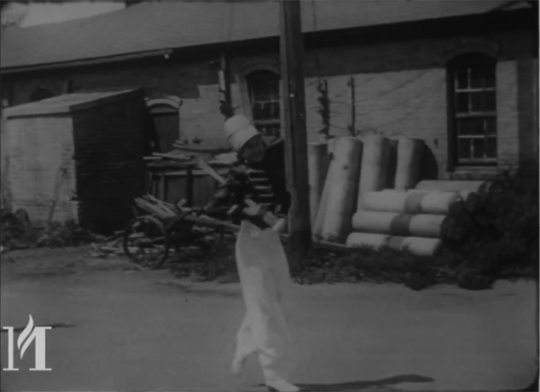
Still from Cologne
Still from the film Cologne: From the Diary of Ray and Esther, filmed in Cologne, Minnesota, in 1939 by Raymond and Esther Dowidat. E-34 (AV1989.205), Audio-visual Collection, Minnesota Historical Society, St. Paul.
Holding Location
Related Articles
Turning Point
In 1939, Ray and Esther Dowidat collaborate on filming Cologne in their small Carver County town, creating a lasting film document of a rural community before the start of World War II.
Chronology
1936
1937
1939
1942
1946
1989
1999
2001
Bibliography
AV1989.205 donation record and correspondence, 1989–2001. Audio-visual collection, Minnesota Historical Society, St. Paul.
Certificate of marriage of Raymond W. Dowidat and Esther L. Nelson, July 12, 1936. Worth County, Iowa State Board of Health.
E-34 (AV1989.205)
Audio-visual Collection, Minnesota Historical Society, St. Paul
Description: Cologne: From the Diary of Ray and Esther, 1 film reel, 13 min, 16mm.
https://mnpals-mhs.primo.exlibrisgroup.com/discovery/fulldisplay?docid=alma990016518460104294&context=L&vid=01MNPALS_MHS:MHS&lang=en
Eagan, Daniel. “Cologne: From the Diary of Ray and Esther.” Center for Home Movies.
https://www.centerforhomemovies.org/other-histories/essays/cologne-from-the-diary-of-ray-and-esther-daniel-eagan
“Five Physicians Resume Practice.” Minneapolis Morning Tribune, March 31, 1946.
Library of Congress. “Librarian of Congress Names 25 More Films to National Film Registry.”
https://www.loc.gov/item/prn-01-184/national-film-registry-2001/2001-12-18
“Pastor to Mark 40th Anniversary.” Minneapolis Star Journal, January 1, 1944.
Simmon, Scott. “Cologne: From the Diary of Ray and Esther.” National Film Preservation Foundation.
https://www.loc.gov/static/programs/national-film-preservation-board/documents/cologne.pdf
Strickler, Jeff. “Local Films To Be Saved.” Minneapolis Star Tribune, March 7, 1999.
“Raymond Dowidats Wed.” Minneapolis Tribune, November 17, 1936.
Related Resources
Secondary
Stott, William. Documentary Expression and Thirties America. New York: Oxford University Press, 1973.
Tepperman, Charles. Amateur Cinema: The Rise of North American Moviemaking, 1923–1960. Oakland, CA: University of California Press, 2014.
Treasures from American Film Archives. DVD. San Francisco: National Film Preservation Foundation, 2000.
Zimmerman, Patricia R. Reel Families: A Social History of Amateur Film. Bloomington, IN: Indiana University Press, 1995.
Web
Library of Congress: National Film Preservation Board. Film Registry.
https://www.loc.gov/programs/national-film-preservation-board/film-registry
National Film Preservation Foundation.
https://www.filmpreservation.org











